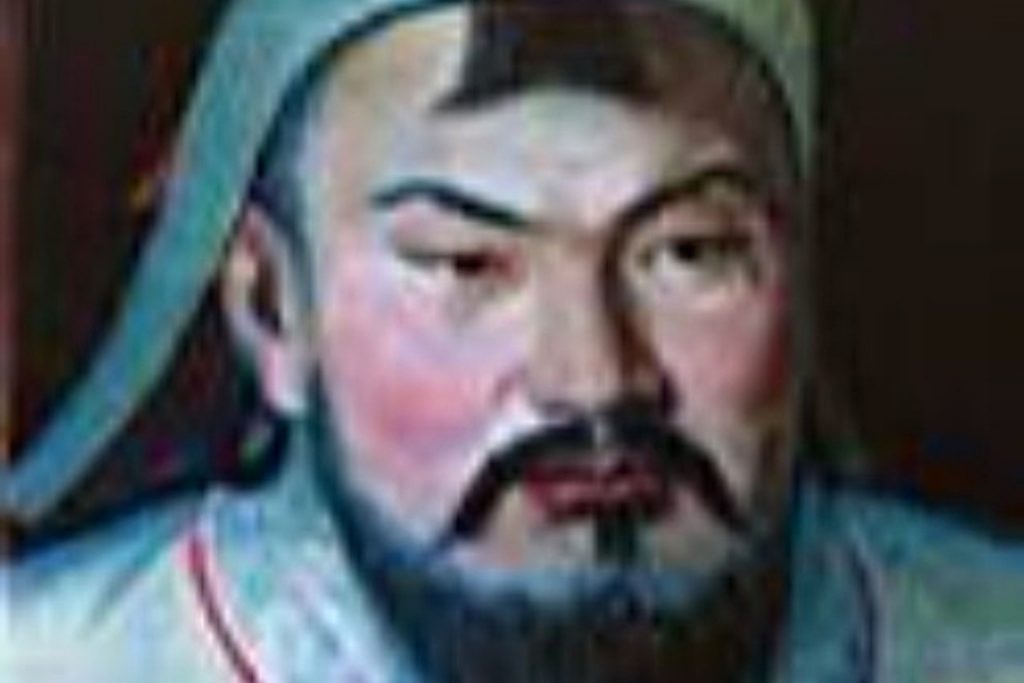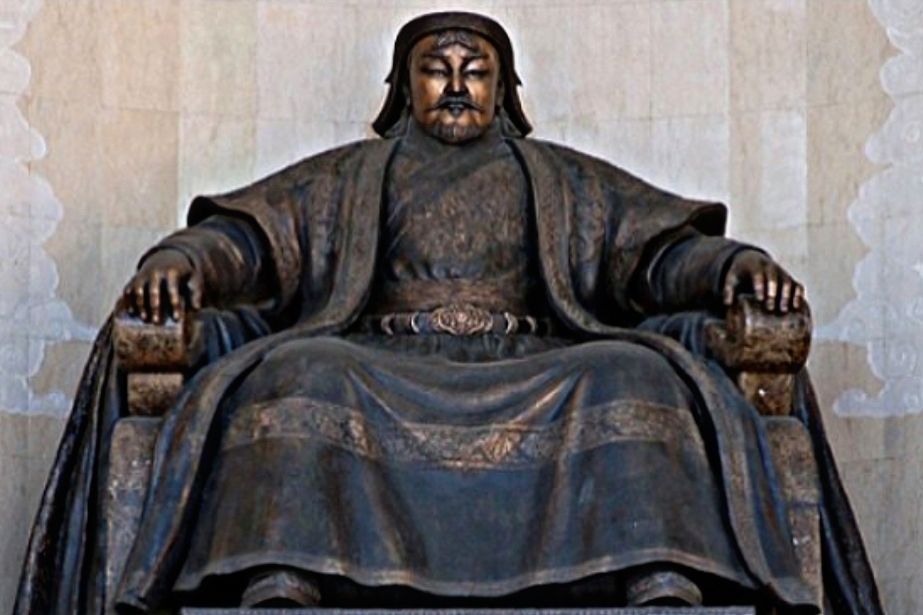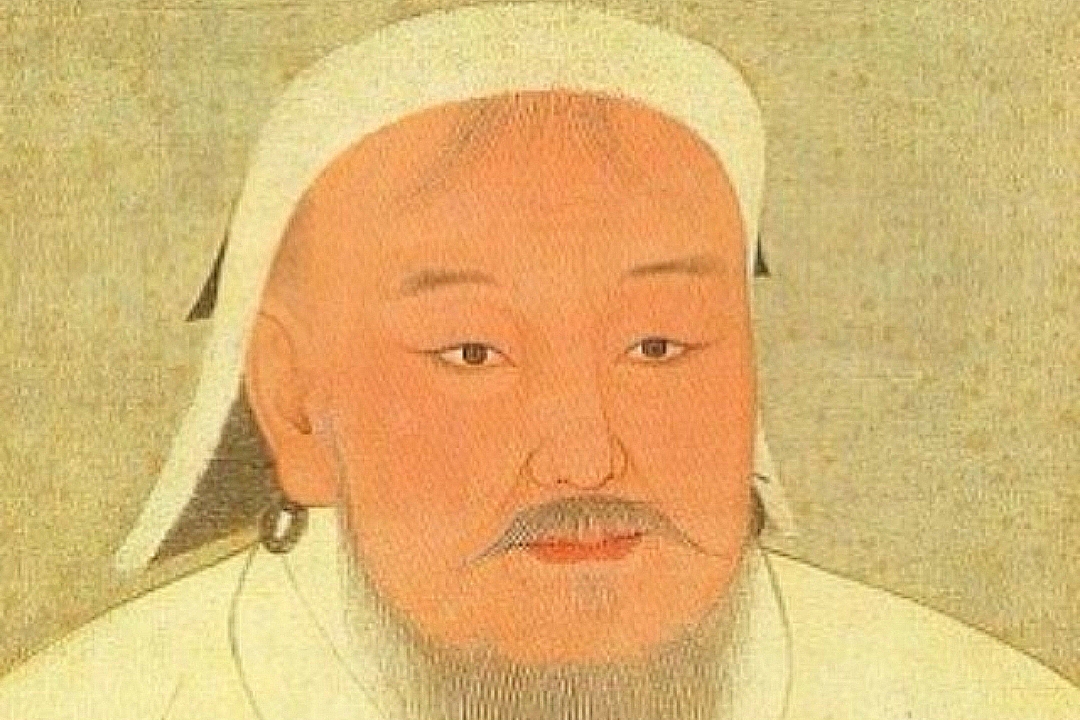Genghis Khan, one of the most powerful and influential figures in world history, founded the Mongol Empire, which became the largest contiguous empire ever known. Born as Temüjin in the rugged Mongolian steppes, Genghis Khan rose from obscurity to unite warring tribes and establish a legacy that would forever change the course of history. His military strategies, governance, and vision forged an empire that stretched from the Pacific Ocean to Eastern Europe, influencing civilizations across continents.
Early Life of Genghis Khan
Genghis Khan was born around 1162 near the Onon River in present-day Mongolia. Named Temüjin, meaning “of iron” or “blacksmith,” he was the son of Yesügei, a tribal chieftain of the Borjigin clan. His early life was marked by hardship and survival. At the age of nine, his father was poisoned by a rival clan, leaving Temüjin and his family vulnerable.
Abandoned by their tribe, Temüjin, his mother Höelün, and his siblings faced poverty and constant danger. During this period, the young Temüjin demonstrated remarkable resilience and leadership, qualities that would define Genghis Khan in his later years. Despite his family’s struggles, he began forging alliances with other tribes, a key step in his rise to power.
Rise to Power
Temüjin’s ascent to power began in earnest in his teenage years when he sought revenge against those who betrayed his family. Through a combination of diplomacy, marriage alliances, and military campaigns, he gradually gained the loyalty of other Mongol tribes. His marriage to Börte, a woman from a powerful tribe, further cemented his position.
In 1186, Temüjin declared himself the leader of the Mongols, uniting disparate tribes that had long been at war with one another. However, his early reign was challenged by rival leaders, particularly Jamukha, a former ally. Temüjin’s eventual victory over Jamukha in a series of battles solidified his control and earned him a reputation as a formidable leader.
In 1206, Temüjin was formally proclaimed “Genghis Khan,” meaning “Universal Ruler,” at a grand assembly of Mongol tribes. This title marked the beginning of his transformation into a legendary figure. Genghis Khan’s vision extended beyond the Mongolian steppes—he aimed to conquer and unify the known world.
The Conquests of Genghis Khan

The military campaigns of Genghis Khan were unparalleled in their scale and impact. His army was known for its discipline, mobility, and innovative tactics, which allowed the Mongols to defeat much larger and more established forces.
- China Campaigns
Genghis Khan’s first major target was the Jin Dynasty in northern China. Starting in 1211, he launched a series of campaigns that culminated in the capture of the Jin capital, Zhongdu (modern-day Beijing), in 1215. His success in China demonstrated his ability to adapt to diverse terrains and fortified cities, skills that would prove invaluable in future conquests. - Central Asia and the Khwarazmian Empire
After subjugating northern China, Genghis Khan turned his attention westward. In 1218, he initiated a campaign against the Khwarazmian Empire, which spanned parts of modern-day Iran, Uzbekistan, and Turkmenistan. The conflict began when the Khwarazmian ruler executed Mongol envoys, an act that enraged Genghis Khan. His retaliation was swift and brutal, leading to the complete destruction of the Khwarazmian Empire.This campaign showcased Genghis Khan’s strategic genius. His forces crossed vast deserts, mountains, and rivers to strike at the heart of the enemy, employing psychological warfare and superior tactics to secure victory. - Expansion into Europe and the Middle East
Genghis Khan’s campaigns extended into Eastern Europe and the Middle East, laying the groundwork for further expansion by his successors. His armies reached as far as the Caucasus and the Volga River, spreading fear and devastation across the region. The Mongol invasions reshaped the political and cultural landscape of Eurasia, influencing trade routes, governance, and military strategies.
Leadership and Governance
While Genghis Khan is often remembered for his conquests, his leadership and governance were equally transformative. He established a legal code known as the Yassa, which promoted order, discipline, and loyalty within his empire. The Yassa emphasized meritocracy, religious tolerance, and the protection of trade and commerce.
Genghis Khan also revolutionized the Mongol military and administrative systems. His army was organized into units of tens, hundreds, and thousands, fostering cohesion and efficiency. He rewarded loyalty and competence, regardless of social status, enabling talented individuals to rise through the ranks.
Under Genghis Khan’s rule, the Mongol Empire became a hub of cultural and economic exchange. The empire facilitated the flow of goods, ideas, and technologies along the Silk Road, creating a level of connectivity that had never been seen before.
Death and Succession
Genghis Khan died in 1227 during a campaign against the Western Xia in China. The exact cause of his death remains a mystery, with theories ranging from illness to injuries sustained in battle. Despite his death, the empire he built continued to expand under the leadership of his successors, including his son Ögedei Khan and later his grandson Kublai Khan.
Before his death, Genghis Khan divided his empire among his sons, ensuring a stable transition of power. This division laid the foundation for the four major khanates: the Golden Horde, the Chagatai Khanate, the Ilkhanate, and the Yuan Dynasty in China.
Legacy of Genghis Khan

The legacy of Genghis Khan is both profound and controversial. On one hand, he is remembered as a ruthless conqueror responsible for the deaths of millions. His campaigns often involved massacres and destruction on an unprecedented scale, leaving a trail of devastation across continents.
On the other hand, Genghis Khan is celebrated for his contributions to global history. He united the Mongol tribes, created one of the most efficient military forces in history, and facilitated cultural and economic exchange on a massive scale. His policies of religious tolerance and meritocracy influenced governance practices in his empire and beyond.
In Mongolia, Genghis Khan is revered as a national hero and a symbol of unity and strength. His image adorns statues, currency, and other national symbols, reflecting his enduring significance in Mongolian culture.
Conclusion
Genghis Khan’s life is a testament to the power of vision, determination, and adaptability. From humble beginnings, he rose to become one of the most influential figures in world history, leaving a legacy that continues to shape the modern world. Whether viewed as a conqueror or a unifier, GenghisKhan impact on history is undeniable, cementing his place as one of humanity’s most remarkable leaders.

